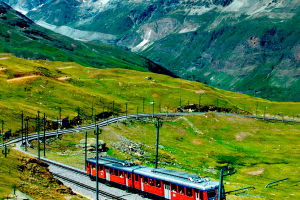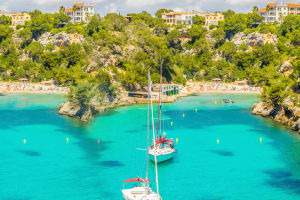Hey, Lykkers! Have you ever dreamed of stepping onto a land so unique that it feels like another planet? Welcome to Socotra Island, a remote paradise in the Arabian Sea, often described as the most alien-looking place on Earth.
From its strange Dragon’s Blood Trees to untouched white-sand beaches, Socotra is a once-in-a-lifetime adventure. If you're planning a trip, this guide has everything you need—flights, best time to visit, costs, must-see attractions, and essential travel tips!
Where Is Socotra Island?
Socotra is an island in the Arabian Sea, located about 350 kilometers south of Yemen, 250 kilometers east of Somalia, and 380 kilometers from Oman. It is the largest island in the Socotra Archipelago, which consists of four islands: Socotra, Abd al Kuri, Samhah, and Darsah. The main island covers 3,796 square kilometers, with a length of 132 kilometers and a width of 50 kilometers. The highest peak is Mashanig in the Hajhir Mountains, rising to 1,503 meters.
How to Get to Socotra?
Socotra is remote, with limited transportation options. The only way to reach it is by air or sea.
Flights to Socotra
- The main airport is Socotra Airport (SCT) near Hadibu, the capital. Flights are limited, so it’s crucial to plan ahead.
- Cairo to Socotra (via Yemenia Airways) – Once a week, usually on Tuesdays or Wednesdays.
- Abu Dhabi to Socotra (charter flights) – Available seasonally, often twice a month.
- Seiyun (Yemen) to Socotra – Regular flights, but transit in Yemen requires special permits.
- Ticket Prices: Round-trip flights range from $800 to $1,500, depending on the season.
- Tip: Book at least two months in advance, as flights sell out quickly.
Travel by Sea
Occasionally, cargo ships travel from Mukalla, Yemen, to Socotra, but the journey takes 3 to 4 days and is highly unreliable.
Best Time to Visit Socotra
Socotra’s climate is hot and dry most of the year, but the best time to visit is from October to April, when the weather is pleasant and seas are calm.
- October to February – Ideal for hiking and exploring nature.
- March to April – Best for snorkeling and diving, as marine life is most active.
- May to September – Avoid this period! Strong monsoon winds make travel dangerous, and flights may be canceled.
- Tip: Plan your visit for November or March to enjoy both lush landscapes and good snorkeling conditions.
Entry Requirements and Costs
- Visa: Required for all foreign visitors. Cost: $150 USD. Must be arranged in advance through a licensed tour operator.
- Permits: Some natural reserves require a local permit, which guides usually arrange.
- Tip: Travel agencies often include visa processing in their tour packages.
Top Attractions and Travel Guide
1. Dragon’s Blood Tree Forest – The Icon of Socotra
- Location: Dixam Plateau
- Entry Fee: Free
- Opening Hours: 24/7
- Best Time to Visit: Early morning or late afternoon for cooler temperatures and better lighting
This otherworldly forest is home to Dragon’s Blood Trees, which produce red sap used for medicine and dye. The landscape is dry and rocky, with scattered trees that look like giant umbrellas.
- Tip: Hire a local guide to learn about the trees' unique survival techniques and local legends.
2. Hoq Cave – A Hidden Underground World
- Location: Near Terbak village
- Entry Fee: $5 per person
- Opening Hours: 6:00 AM – 6:00 PM
- Best Time to Visit: Morning before it gets too hot
- Hiking Time: About 1.5 hours each way
This 3-kilometer-long cave features stalactites, underground pools, and ancient rock inscriptions over 2,000 years old.
- Tip: Bring a headlamp and sturdy shoes—the cave is dark and slippery.
3. Qalansiyah and Detwah Lagoon – A Beach Paradise
- Location: Northwest Socotra
- Entry Fee: Free
- Opening Hours: 24/7
- Best Time to Visit: Late afternoon for sunset views
Qalansiyah is a fishing village with a stunning coastline, while Detwah Lagoon has clear turquoise waters where visitors can swim, snorkel, and see stingrays.
- Tip: There are no restaurants, so bring food and plenty of water.
4. Hajhir Mountains – A Hiker’s Dream
- Location: Central Socotra
- Entry Fee: Free
- Best Time to Visit: Early morning
This mountain range is home to rare wildlife, deep valleys, and hidden waterfalls. The hikes offer panoramic views but are challenging, so a guide is recommended.
- Tip: Pack hiking boots, sunscreen, and at least 2 liters of water.
Where to Stay in Socotra?
· Socotra has no luxury resorts—only basic guesthouses, eco-lodges, and campsites.
· Socotra Eco-Lodge (Hadibu) – From $80 per night
· Hadibu Hotel – Budget-friendly, $40 per night
Camping in Dixam Plateau or Detwah Lagoon – Rent gear for $10-15 per night
- Tip: Electricity is unreliable, so bring a power bank and flashlight.
Essential Travel Tips for Socotra
- Bring Cash: No ATMs or banks. Carry enough USD or Yemeni Rials.
- Limited Internet: Prepare for a digital detox—Wi-Fi is rare.
- Simple Food: Expect fresh fish, rice, and flatbread. Bring snacks if you have dietary restrictions.
- Respect Local Culture: Dress modestly, especially in villages.
- Electricity is Unreliable: Power cuts are frequent; pack a power bank.
- No Public Transport: Rent a 4x4 vehicle with a driver, costing $100 per day.
A Once-in-a-Lifetime Journey
Socotra stands as one of the world’s most unique destinations. From its otherworldly forests to its secluded caves and pristine beaches, this island offers an experience unlike any other.
Though getting there may require extra effort, the reward is a rare opportunity to witness nature in its purest form, untouched by the passage of time.
So, Lykkers, is Socotra now on your list of must-visit places? We’d love to hear your thoughts in the comments!


